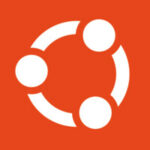IBM today unveiled new Big Data analytics software and services to help organizations build and maintain their global workforce. Developed by IBM Research scientists, the software enables business leaders to analyze massive amounts of data shared by employees and uncover work-related trends that can be used to build and preserve more productive work environments and minimize attrition.
With IBM’s new workforce analytics services, human resource (HR) executives can gain real-time view into thousands of data points shared by employees via corporate surveys, commonly available employee data (demographics, performance reviews, salary, years of service, etc.) as well as data shared on internal and external social media platforms. As a result, companies can tap into the pulse of their organization to improve retention, performance and morale. They can also use analytics to understand what drives job performance, or how employees feel about a new company policy or advertising campaign.
Today companies are looking for ways to plug into the pulse of their global workforce, rather than rely on a static view of their organization. By collecting information shared by employees such as their skills and career aspirations and pairing this with HR data, companies get a more complete analysis of their workforce, how each person is connected, their influence on each other, how they work together and more. At the same time, companies also gain a more accurate view of their organization while identifying their most critical talent.
Maintaining a strong and engaged workforce is a rising challenge for global organizations. According to IBM’s CEO Study of more than 1700 chief executive offers, 71 percent of executives surveyed cited human capital as their greatest source of sustained economic value.
“Companies that invest in Big Data and analytics to nurture their workforce will keep the best talent and distinguish themselves from their competition,” said Dr. Bob Sutor, VP, Business Analytics and Mathematical Sciences, IBM Research. “Knowing what motivates people can boil down to the data you capture and how you interpret it. Using the insights identified by our new predictive and socially-driven workforce analytics tools, companies can ensure long-term success through employee engagement and meaningful work.”
Global retailer Tesco, using IBM workforce analytics services, analyzed results of a company survey and discovered that there was more they could do to connect colleagues using social media. According to Alison Horner, Group Personnel Director, Tesco, “IBM analytics brought our own data to life, allowing meaning to be derived from the words of our colleagues in a way that delivered insight, and created excitement amongst the Tesco team. It has opened our eyes to what is possible, enabling us to think bigger and be more demanding about what we want to achieve with employee engagement.”
IBM’s new workforce analytics services include:
• IBM Survey Analytics services: Uses text and visual analytics software to automatically extract and display over one million pieces of anonymous unstructured data derived from employee surveys, including more than 4.2 million employee comments collected annually through surveys conducted by Kenexa. It also scans Human Resource Information System (HRIS) data broken down by employee demographic. An easy-to-read dashboard then visualizes findings via a sentiment “heat map” of trends broken down by employee segments. For example, an HR manager may learn that engagement levels for computer engineers in a business unit rose two percent more than the overall organization. By analyzing the results of this group, it was discovered the business unit manager developed specific action plans around collaboration tools based on the group’s feedback. With this input, managers in areas of low engagement can implement a company-wide action plan.
• IBM Retention Analytics services: Provides a data-driven approach to understanding attrition patterns within a business. It applies predictive analytics software to enterprise HR and CRM data, and social data, and then identifies high-attrition “hot spots” within the company. With this information it determines key drivers and specific actions to retain critical talent. For example, an organization wants to understand why turnover rates of sales executives between three and five years tenure in certain US branches are much lower than the overall average. Through a breakdown of each business, the team finds that these particular executives have more realistic quota rates and therefore remain with the business for longer periods of time. With this data, the analytics software automatically identifies other at-risk employees so changes can be made to quota rates to ensure their long-standing employment.





